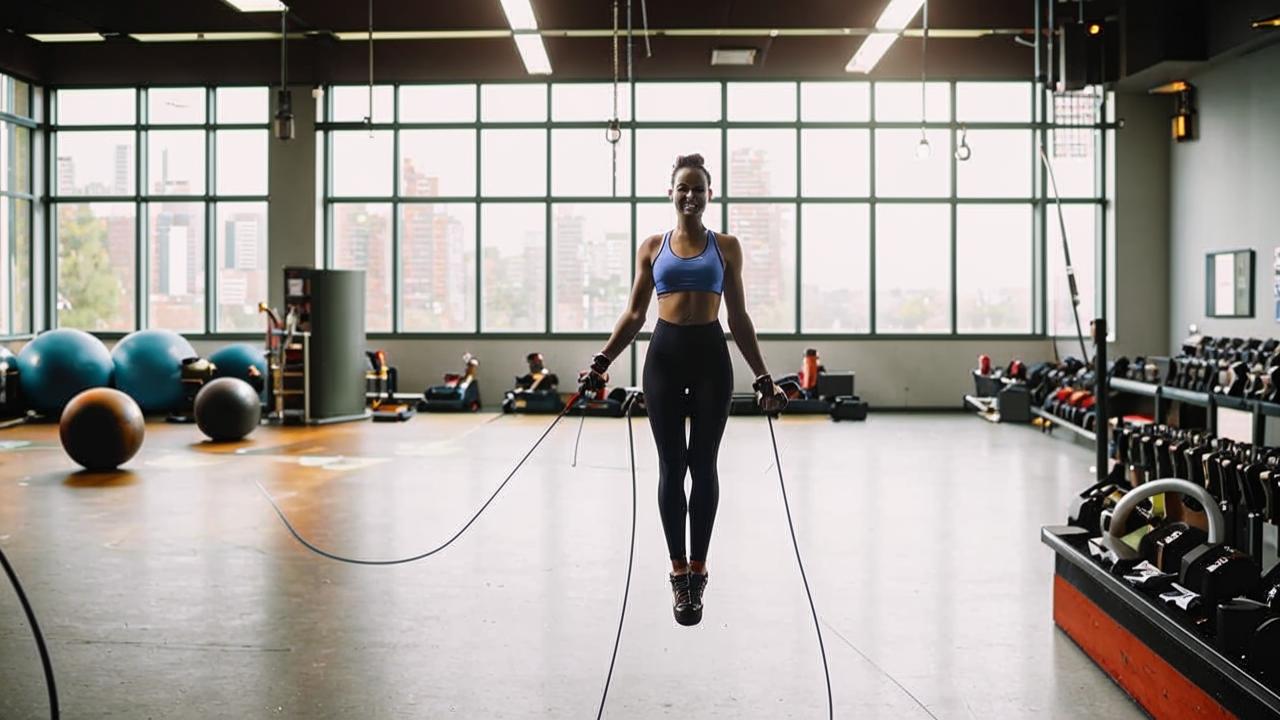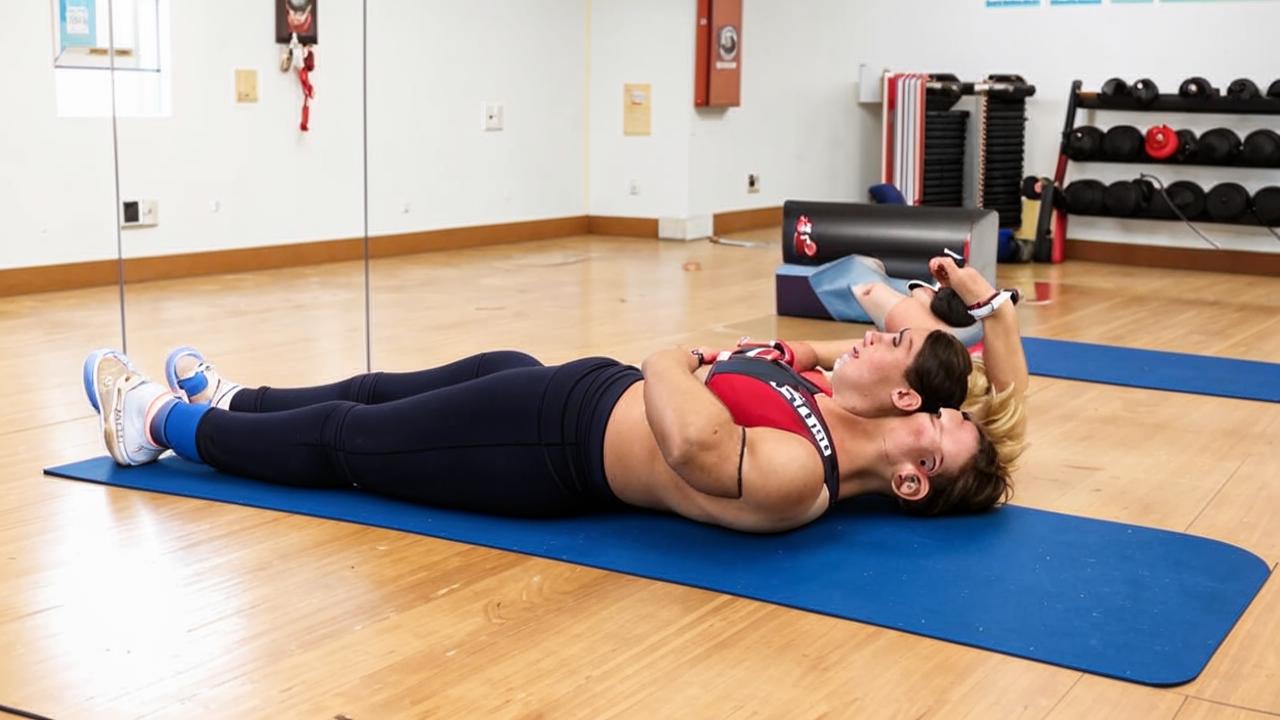
CMC in freestyle wrestling and kickboxing, two-time champion of Moscow in Thai boxing
What muscles are important for a kickboxer? What exercises to do?
Kickboxing, like many martial arts, develops physical qualities, but it has several peculiarities. Any training begins with a warm-up. In kickboxing, a significant part of it is devoted to flexibility, because a large amount of work must be done with the legs.
Also, the fighter must be functionally prepared. In other words, his physical qualities – speed, strength, endurance, agility – must be highly developed. Kickboxing training is characterized by high intensity – on average athletes burn more than 800 kcal, and the body must be ready for such hard work. At competitions all fights, as a rule, are held in 1-2 days, and an athlete can take part in 2-3 fights in a day, and this is a very serious test.
After the organism gets used to the loads, there is monotonous work on setting the technique of punching. Correct execution is practiced for hours, even experienced athletes often practice the same series, bringing it to perfect automatism.
Last but not least, kickboxing can be traumatizing, just like any other kind of martial arts. Here there are risks of damaging something not only by receiving a punch, but also by striking it. So now we’re going to talk about how to get stronger to avoid this.
Why a kickboxer needs to pump up his whole body
It’s important for a fighter to be fit not for beauty – every muscle is needed for either punching or coordination. Let’s take a look at which muscle groups are involved and what they are responsible for.
- Leg muscles. Quadriceps and adductor/retractor muscles. They are involved not only in kicks, but also in the wrestler’s movement and are responsible for his coordination. It is also worth adding calf muscles and hamstrings – they give the fighter in the ring a certain “springiness”.
- Arm muscles. Triceps and deltoids are responsible for the speed and power of the blow. Also do not forget about the forearms – it is they form your block.
- Cortex and lower back muscles. The kor includes the rectus, obliques and transverse abs, cog muscles, glutes and lower back. This is the muscle group that is involved in many arm and leg kicks, such as side-kicks and turning kicks. In addition, well-developed abs are better at absorbing your opponent’s punches.
These are just the main muscle groups, but it should be noted that all muscles are involved in kickboxing. And it is most vividly expressed in the kinetic force of the blow. When performing a kick correctly, your muscles are engaged in sequence, from the legs to the extreme point of the fist, and each adds its strength and energy to achieve maximum effect.
If there is no gym nearby where you can enroll in a kickboxing section – no problem. We have prepared a few exercises that you can do at home and get stronger.
Warm-up
This complex is not included in the main exercises, but it is necessary for proper work. Consistently knead the body, starting from the neck and ending with the ankle. Do the exercises that you know. We will not say anything unique, but each shortcoming or “hack” will hurt you rather than the opponent. So we prepare as if we were going to the last fight.

We pay special attention to the ligaments and tendons of the limbs – the effectiveness of the entire training depends on them. This includes the most intense exercise – jumping rope.
Push-ups on fists and hands
An exercise that not only pumps up your hands, forearms, shoulders and chest, but also gives you stiffness at impact (hands and forearms work the most, and the rest of the body complements the kinetic force).
Stand in a supine position. Body and legs form one straight line. Lower your body to a 90-degree angle at the elbows and return to the starting position. If you find it easy to do push-ups on your hands, make the exercises more difficult by standing on your fists.
Do 25 times in two approaches at the initial level. Then increase the number of repetitions by 10 as your strength improves. At 50-60 reps you can already connect the weighting with dumbbells/blunts or a light little brother/nephew on your back.
Plank
One of the most effective exercises for all muscle groups. It has the best effect on the cortex and dentate muscles, which are directly responsible for turning kicks and arm punches. It also gives the muscles elasticity and keeps them toned.
The technique is quite simple. Leaning on your forearms, fix yourself in a push-up position. Arms are bent at 90 degrees, the body is in a strictly parallel position to the floor. Start with 30-40 seconds, daily increasing the duration of the exercise by five seconds. Two minutes, in principle, is enough, but if you can do more, that’s great!
Jab, cross, hook, uppercut with weights
All techniques with hands came to kickboxing from boxing. To give strikes destructive force, you can perform exercises with weights, but you should start with minimal weights.
- Jab – a direct blow to the head. It is applied from a fighting stance with the leading fist straight forward.
- Cross – a punch from the far side with the strongest arm.
- Hook – a punch thrown from the side.
- Uppercut – a punch thrown with the clenched hand from underneath the block.
Practice each punch for a minute, then pause for 30 seconds and repeat. After three rounds you can move on to the next exercise. But if you have the strength to do more, do it.
More about the techniques of kickboxing told in the previous material. Read it at the link below.
Squats with weights
Squats should be performed exclusively with weights – so we strengthen the legs and give them explosive power. Boys start with 5-10 kg, boys and girls up to 18 years old can cope with pancakes up to 15 kg, and the older ones work with a barbell. If you don’t have pancakes on hand, a bucket of water will do just fine. But if it’s too light for you, you can weight the bucket with sand/earth (and squat like with a kettlebell), or work with two via a barbell – this also engages your back.
When squatting, keep your back straight and sit up to a 90 degree angle in your knees. They should not extend beyond your toes.
Try to manage to squat 20 times in a minute. If you work with serious weights, start with 15 times. The main thing is to do it correctly. If the technique is incorrect, there is a risk of damaging the lower back.
Twists and bends of the body
As we have already said, the abs are not only great at absorbing blows, but are also responsible for kinetic force. The abs have many facets, and you can and should work on each one separately. Straight muscles are pumped up by simple twisting, which we know well from school. The oblique muscles gain volume by turning the body to the necessary side while bending to the left/right. You can work with weights for better efficiency.
Try to do 20 times per minute. You can increase by 5-10 times if you feel you are getting faster.

Shadow Fight
For dessert – a fight with an imaginary opponent. The most important thing is that all kicks and series should be performed technically correctly. First technique, then speed of movement. Do not confuse and do not hack.
For the first time do a minute at an intense pace. Then you can comfortably work 2-3 minutes, but no more.
Warm-up
At the end of each workout, you need to perform a warm-up to put your body in a calm state and prepare it for recovery. Within 5-10 minutes, you need to stretch all your muscles well once again. The article in the link below shared a stretching option.
You can also do body tilts, a few lunges forward and sideways to stretch your legs. If you have been exercising outside, it is best to jog for five minutes at a slow pace. Only then, finish the workout and get ready for a new one.






